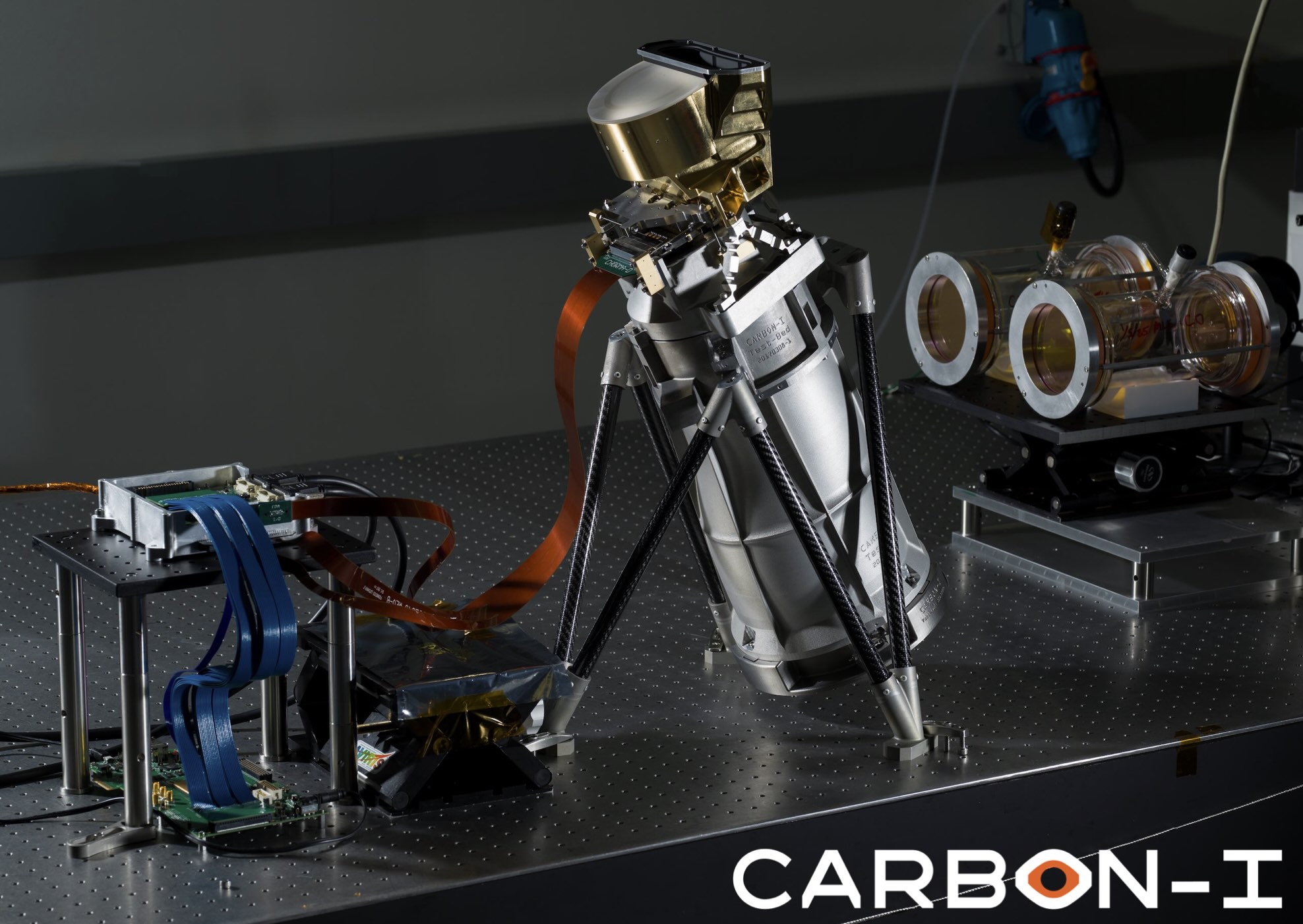The Carbon-I Testbed (CITB)
The Carbon-I Test Bed (CITB) is a high-resolution optomechanical imaging spectrometer built at JPL/Caltech as a rapid prototype and proof of concept for advanced atmospheric gas detection of CH₄, CO₂, and CO. Despite an aggressive development timeline—October to February—the team achieved first measurements by January 30, leveraging additive manufacturing for critical structural components.
Key Features
Optical System
A Dyson lens, silicon-on-insulator slit, and a 3072×512 CHROMA-D detector work together to deliver 0.7 nm/pixel sampling in the 2040–2380 nm spectral range.Largest JPL Grating
A 145 mm diameter concave, blazed grating made of N-BK7 is the largest ever used at JPL, enabling precise dispersion over the entire SWIR band.3D Printed Structure
The spectrometer housing, grating mount, and strut fittings—printed from Al 6061 and Ti 6Al‑4V—represent the largest metal 3D-printed parts at JPL, ensuring rapid iteration and reduced fabrication time.Thermal Flexures
Compliant flexures accommodate thermal mismatches under vacuum and cooling conditions, maintaining alignment for operational temperatures as low as 240 K for the spectrometer and 155 K for the detector.
Development & Current Status
Record Build Time
Initial alignment (warm) and first light were reached in under a month, a pace enabled by heritage designs, in-house spare hardware, and deep technical expertise.Present Work
The CITB is under vacuum, cooling to 240 K (spectrometer) and 155 K (detector). Integration with the PBIP (Penta Beam Injection Platform) is ongoing to refine the instrument’s response function.
This fast, precise, and scalable spectrometer validates the feasibility of Dyson-based imaging spectrometers at high spectral resolution. For example results—including a CH₄ gas-cell spectrum measured under warm conditions with initial alignment—see this notebook. Additional tests are planned, underscoring the CITB’s role as a cornerstone for next-generation space-based greenhouse gas monitoring and as a risk reduction exercise towards the space-borne version.
